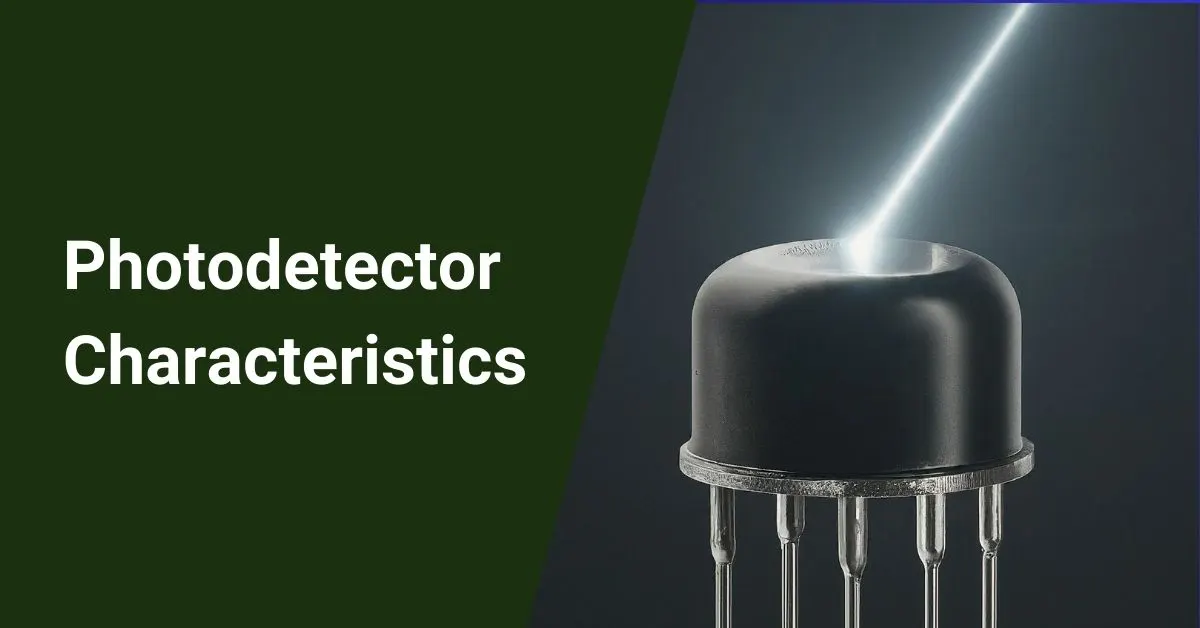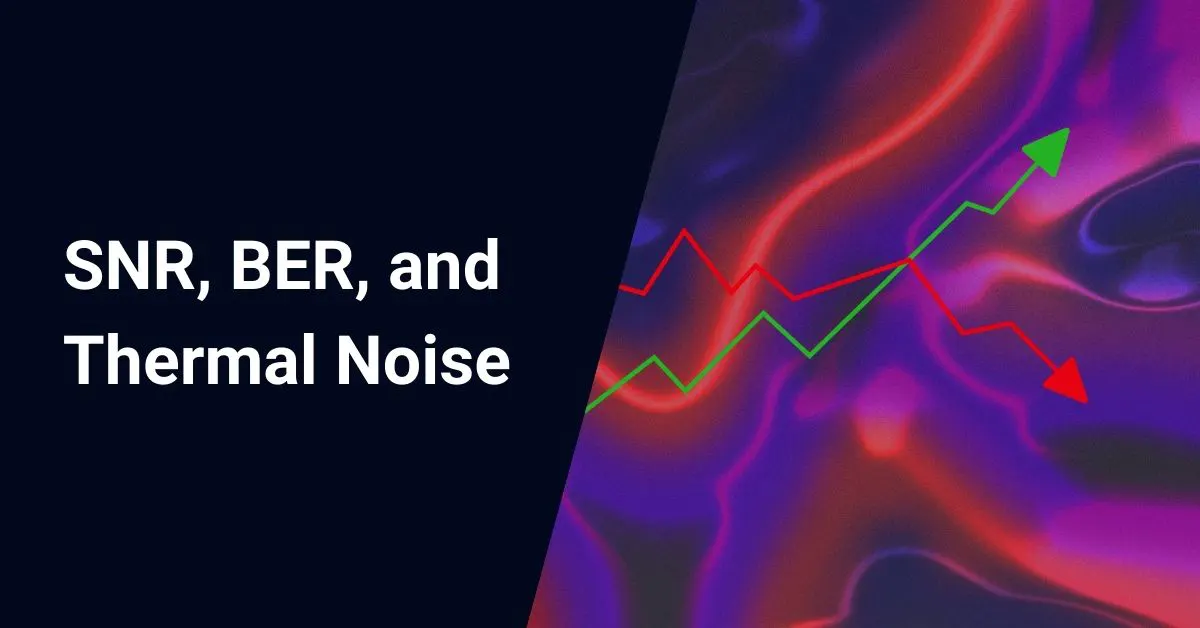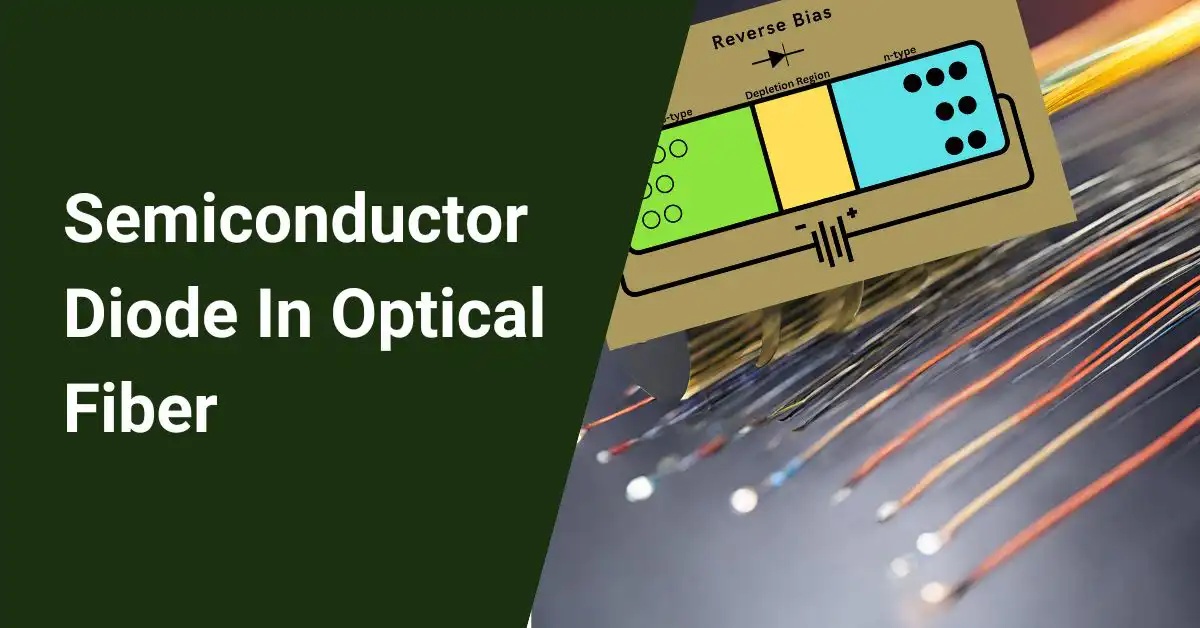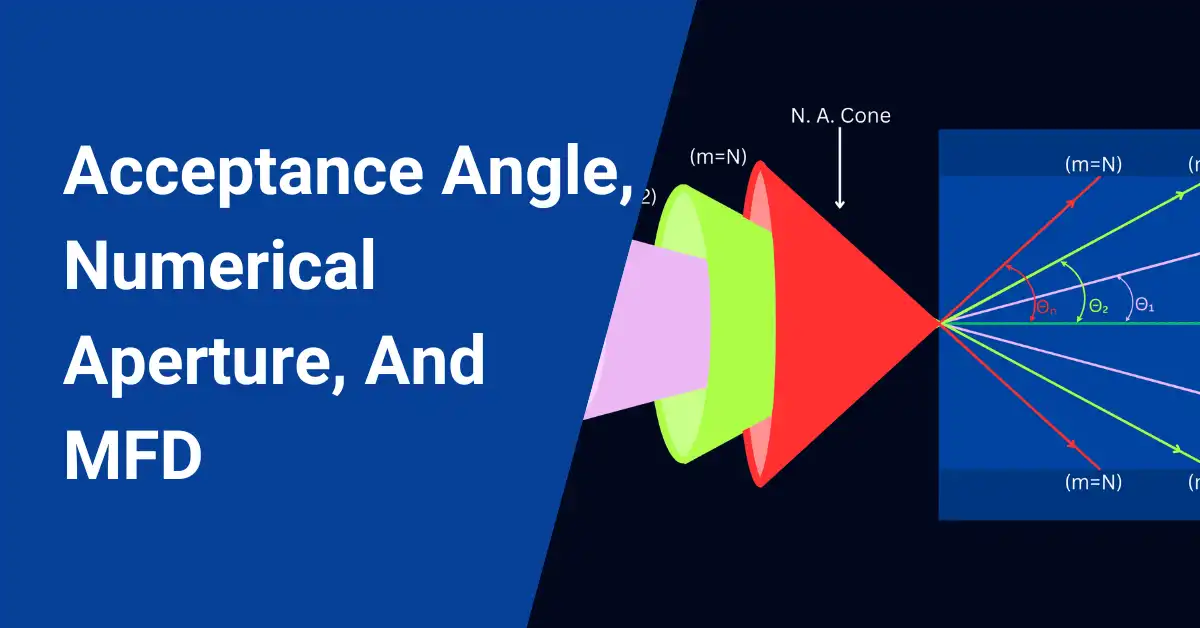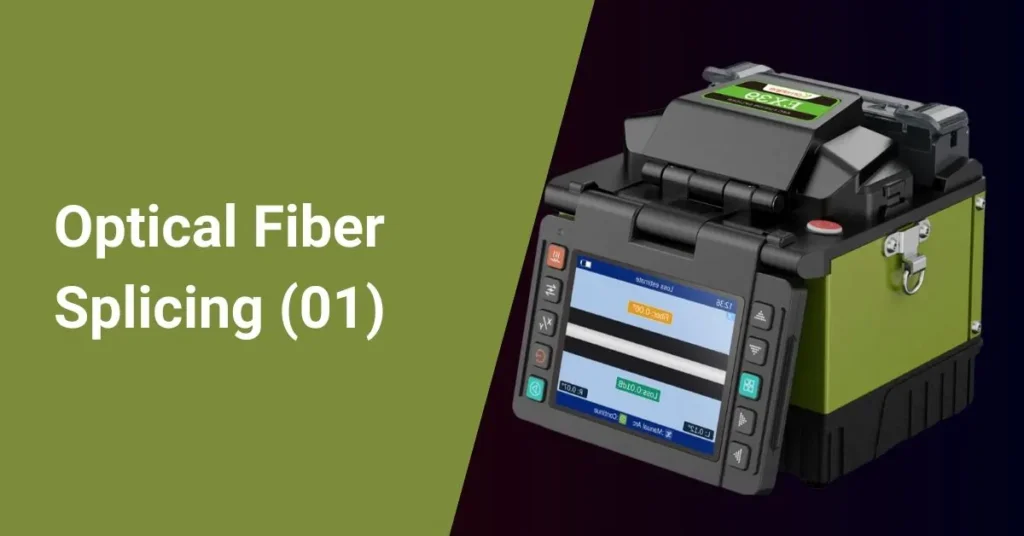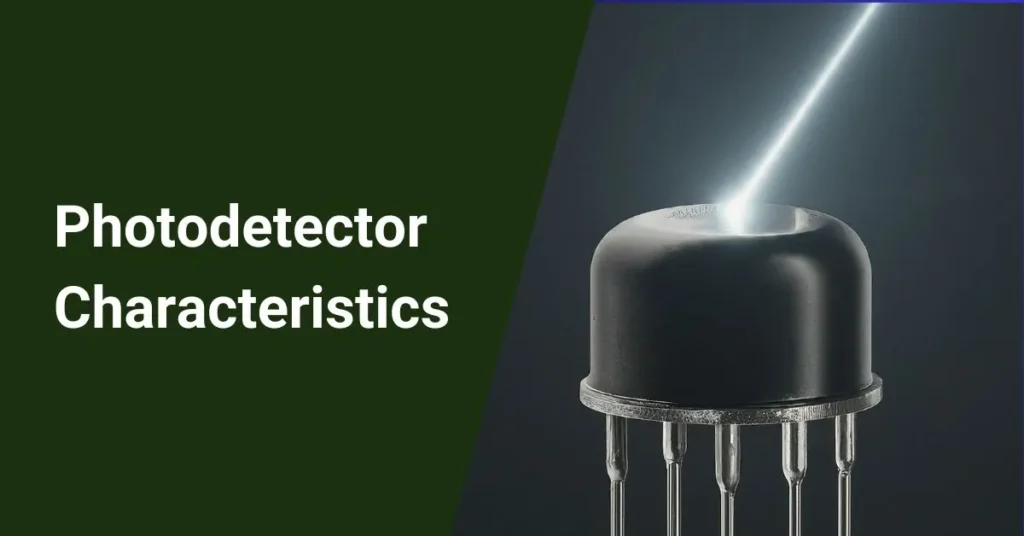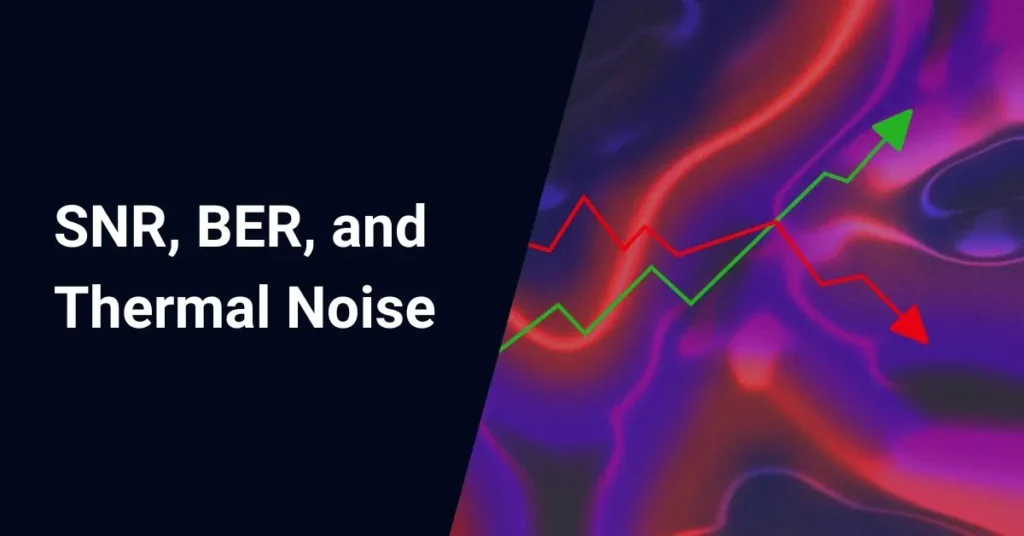As the distance light travels through an optical fiber increases, the light’s strength decreases; this phenomenon is known as “fiber attenuation.” It is also known as fiber loss or signal loss. This is a rather advanced discussion concerning the field of optical fiber. Optical fiber is our first topic of discussion here. So, let’s get started with the basics of attenuation and see how fiber attenuation affects transmission.
Light’s attenuation changes as it travels through different wavelengths. Optical fibers typically use decibels to measure signal attenuation (dB). As depicted below, the decibel, which is used to compare two power levels in dBm, can be defined as the ratio of the optical power Po at the fiber’s output to the optical power Pi at the fiber’s input at a specific wavelength.
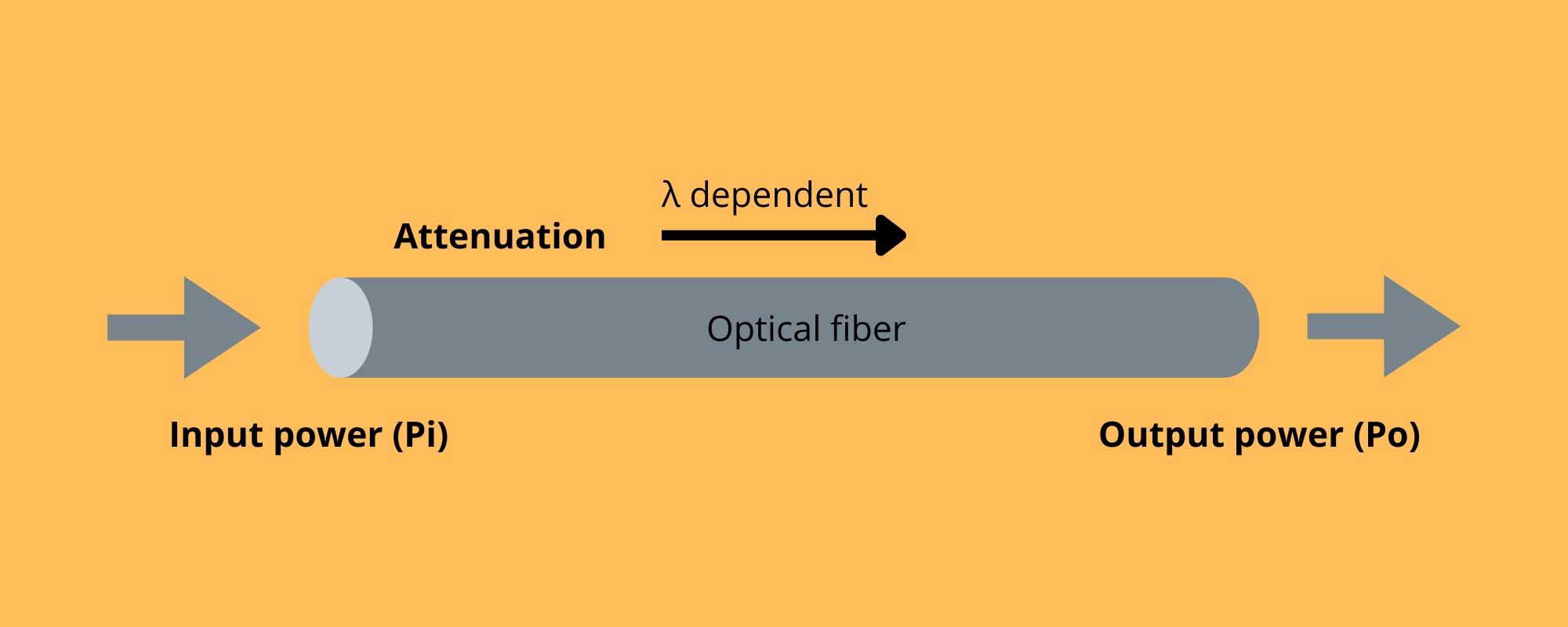
Optical fiber loss also includes a series of parameters, the most important of which is the “loss coefficient,” that is, the number of decibels of optical power reduction caused by the transmission unit length (1km) of optical fiber. Generally, α is the loss coefficient in dB/km.
Table of Contents
We measured attenuation in decibels per kilometer (dB/km). It’s 0.15 dB/km for single-mode fibers, but for plastic fibers, it’s over 300 dB/km. The following table depicts typical optical attenuation for various fiber types.
| Fiber | Attenuation (dB/km) | ||||
|---|---|---|---|---|---|
| Size (μm) | Type | 780nm | 850nm | 1310nm | 1550nm |
| 9/125 | Single Mode | 3 | 2.5 | 0.3-0.8 | 0.15-0.4 |
| 50/125 | Multimode | 3.5-7.0 | 2.5-6.0 | 0.7-4.0 | 0.6-3.5 |
| 62.5/125 | Multimode | 4.0-8.0 | 3.0-7.0 | 1.0-4.0 | 1.0-4.0 |
| 100/140 | Multimode | 4.5-8.0 | 3.5-7.0 | 1.5-5.0 | 1.5-5.0 |
| 110/125 | Multimode | 15 | |||
| 200/230 | Multimode | 12 | |||
| 980/1000 | Multimode | 300 | |||
What are the types of attenuation losses in optical fiber
Many factors cause fiber attenuation. We can divide the factors affecting optical fiber attenuation into 6 categories.
- Intrinsic loss
Intrinsic is the inherent optical fiber loss, including Rayleigh scattering, absorption, etc.
- Bending loss
When the optical fiber is bent, the light in some optical fibers will be lost due to scattering, resulting in a loss.
- Extrusion loss
The loss is caused by a slight bending of optical fiber due to extrusion.
- Impurities
The losses are caused by the impurities in the optical fiber absorbing and scattering the light propagating in the optical fiber.
- Uneven
Loss caused by the nonuniform refractive index of optical fiber material.
- Butt joint loss
Loss caused by the optical fiber butt joint, such as coaxiality of different axes (single-mode optical fiber is required to be less than 0.8 μm). The end face is not perpendicular to the shaft center, the end face is uneven, the butt joint center diameter is not matched, and the splicing quality is poor.
The above primary factors are preliminary judgments that can be categorized as follows.
There are two types of loss: intrinsic loss and additional loss. The inherent loss of the fiber causes additional loss, which is induced by the usage conditions after the fiber is manufactured.
Inherent loss
Scattering loss, absorption loss, and loss due to imperfect fiber structure are examples of inherent loss.
In an optical fiber, there are two main causes of inherent fiber loss,
- Scattering
- Absorption
An optical fiber’s attenuation or linear loss is mainly caused by Rayleigh scattering and extrinsic absorption.
Rayleigh scattering is caused by random inhomogeneities that are small in size compared to the wavelength. At the same time, losses due to impurities inside silica are responsible for extrinsic absorption.
Additional losses
Microbending, bending, and splice losses are examples of additional losses.
So, it’s not just absorption and scattering that contribute to losses in an optical fiber. Non-linear scattering and bending losses also cause attenuation. However, as a whole, they are not thought to be uniform in optical fiber.
Here is a graph showing the wavelength dependence of optical fiber attenuation.
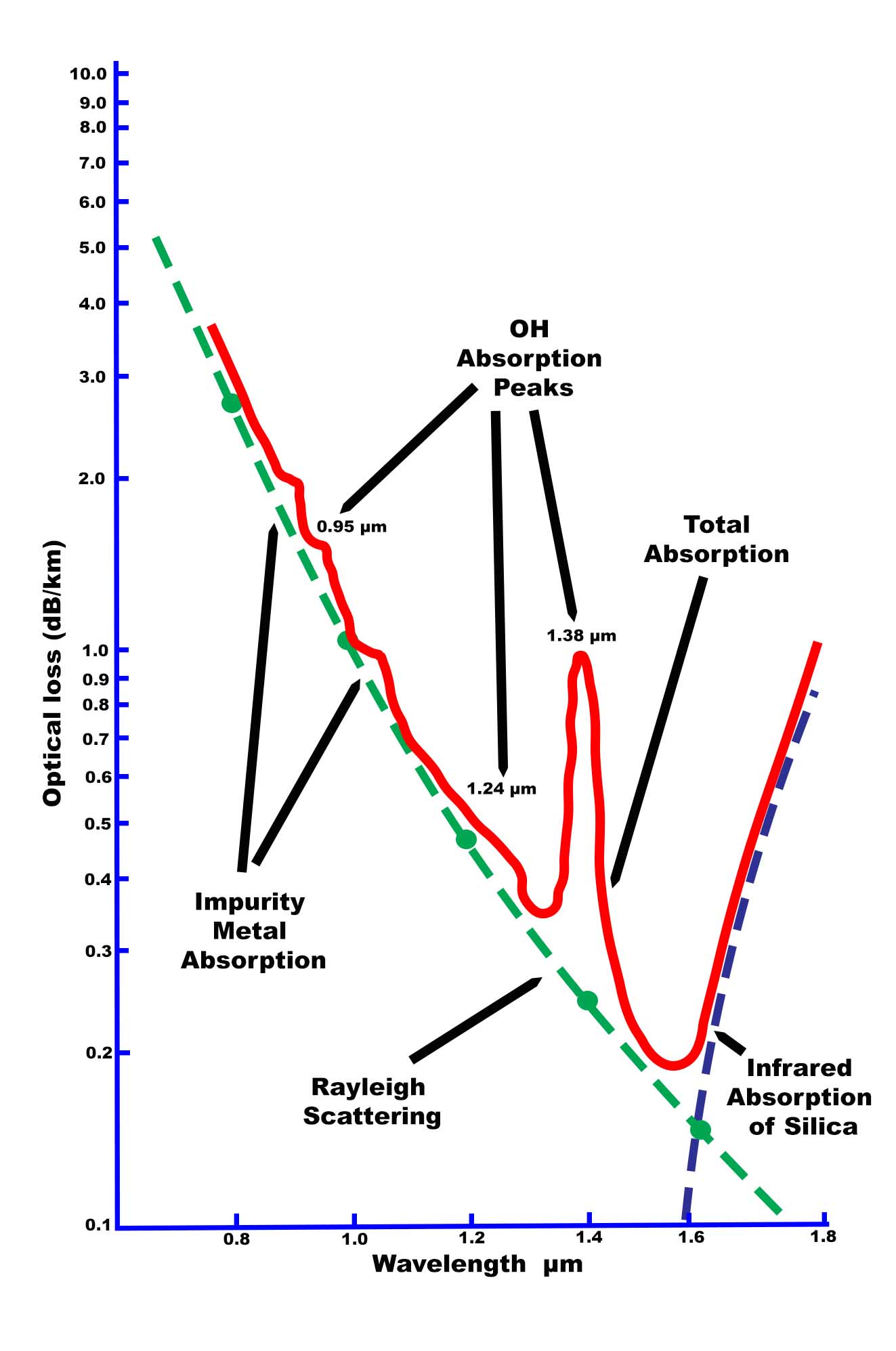
Calculations of fiber losses
Calculating the maximum loss over a line of a certain length in fiber optic cabling is usually necessary. Here are common formulas for calculating fiber losses.
- How to calculate total Link Loss
Total Link Loss (LL) = Cable Attenuation + Connector Attenuation + Splice Attenuation (If there are other components (such as attenuators), their attenuation values can be added up)
- How to calculate cable Attenuation
Cable Attenuation (dB) = Maximum Fiber Attenuation Coefficient (dB/km) × Length (km) ####
- How to calculate connector Attenuation
Connector Attenuation (dB) = Connector Logs × Connector Loss (dB) ######
- How to calculate splice attenuation
Splice attenuation (dB) = number of splice × splice loss (dB) #
The total link loss is the maximum sum of the worst-case variables inside a fiber length. Because it assumes the probable values of component losses, the overall link loss estimated in this way is only an assumption.
You can easily calculate fiber optic cable attenuation values using our Fiber Optic Attenuation Calculator
(#) The real loss of the fiber is determined by a variety of conditions, and the loss value may be larger or lower.
How to reduce losses in optical fiber
We should understand that it is difficult to change some causes of fiber losses. These are inevitable occurrences such as ultraviolet absorption loss, atomic defect absorption loss, scattering loss, etc. But we can minimize additional losses in fiber optic cables.
- Select high-quality optical fibers
High-quality optical fiber should be used, and the optical fiber segment should be kept flat and clean. When cabling, try to use the same batch of optical fibers to ensure that the types are more closely matched.
- Site surveys should be done early
The site survey should be done early in the design process to prevent the optical fiber from being damaged by other external environments.
- Strictly control operations
The technical level of construction staff must also be strictly managed in order to minimize needless optical fiber bending and sheath abrasion.
Summary
As light propagates through optical fiber, its power declines in a phenomenon termed attenuation. Inherent to transmission, losses emerge from scattering and absorption altering light intensity over length.
Attenuation quantifies in decibels per kilometer, with single-mode fibers exhibiting minimal 0.15dB/km reductions at 1550nm. Additional losses arise from bending, impurities, and splices, compounding intrinsic effects.
Wavelength impacts attenuation, evidenced through testing various mediums. Mitigations prioritize high-fiber quality and diligent handling to curb bending, while surveys optimize routing. Connectors and splices introduce transient losses necessitating careful deployment and bonding.
Understanding attenuation sources and their calculation aids in modeling transmission parameters. Though intrinsic losses prove unavoidable, minimizing extras preserves signal integrity over extended hauls. With meticulous construction and maintenance, optical distribution withstands degradation accompanying expanded tertiary distribution.
FAQ
What are the 3 types of attenuation in optical fiber?
Intrinsic attenuation, extrinsic attenuation, and fiber bend loss are the three types of attenuation in optical fiber. Intrinsic attenuation is the attenuation that occurs due to the material properties of the fiber itself. Extrinsic attenuation is the attenuation that occurs due to external factors. Fiber bend loss is extrinsic attenuation that occurs when the fiber is bent or coiled too tightly.
What fiber has the lowest attenuation?
Single-mode fiber has the lowest attenuation among all types of optical fibers. In a single-mode fiber, light travels in a single mode, which means that the light follows a straight path down the fiber with minimal dispersion.
What is the largest contributor to fiber attenuation?
Scattering is the largest contributor to attenuation at shorter wavelengths, such as in the visible light range. In contrast, absorption becomes the dominant form of attenuation at longer wavelengths, typically in the infrared range used for optical fiber communication systems.
What are the different types of attenuator in optical fiber?
Fixed attenuator: Provides a fixed amount of attenuation, typically measured in decibels (dB).
Variable attenuator: Allows the user to adjust the amount of attenuation in real-time, typically using a dial or some other control mechanism.
In-line attenuator: A passive device spliced directly into the fiber optic cable to reduce the signal power.
Stepwise attenuator: A device that provides a fixed amount of attenuation in discrete steps, typically using a rotary switch or other types of control mechanism.
Absorptive attenuator: A material that absorbs the light energy to reduce the signal power.
What is fiber attenuation in 1550 nm and 1310 nm?
For single-mode fiber, the typical attenuation at 1550 nm is around 0.2 dB/km, while at 1310 nm, it is around 0.5 dB/km. For multimode fiber, the typical attenuation at 1550 nm is around 0.5 dB/km, while at 1310 nm, it is around 0.7 dB/km. These values are general estimates, and the actual attenuation can vary depending on the fiber type, manufacturing process, and other factors.



